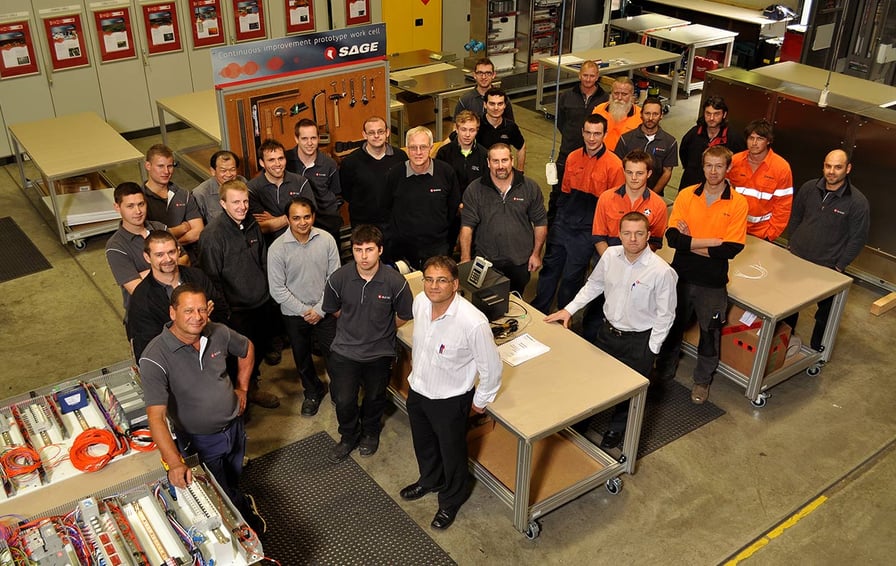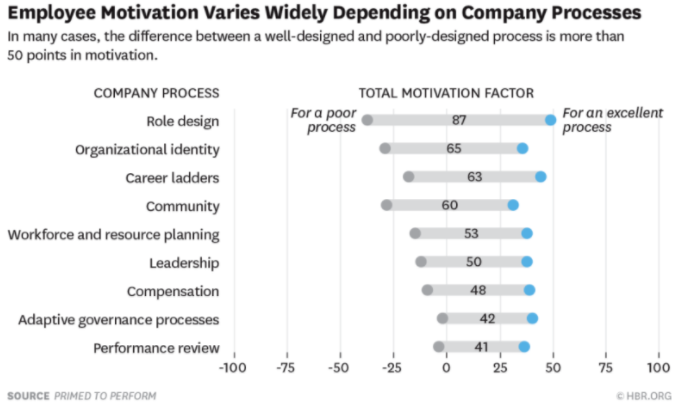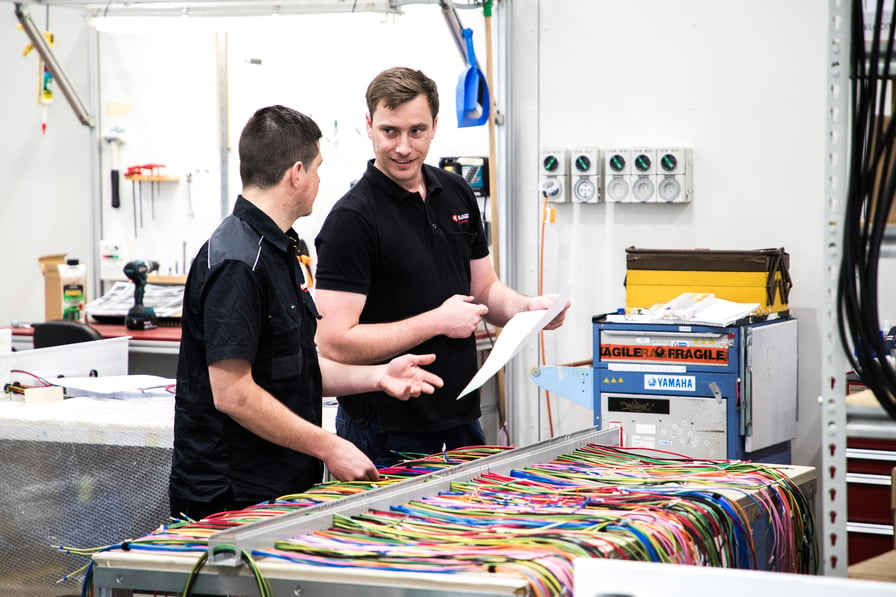Empowered staff who have the skills and knowledge to make decisions are the ones who’ll be proactive, champion change programs, and add the most value to the business; like reducing downtime before it occurs.
But managers can’t force people to feel empowered; however, they can give employees the tools that they need. This leads to employees making decisions, solving problems, handling projects and acting in spaces you cannot, all of which can lead to employee empowerment.
When you’re time-poor, budget-poor and balancing multiple stakeholder’s expectations, empowering employees might be the last thing on your mind. But by spending a little time developing your production staff, you’ll offload some of that burden and save time and money.

Here are nine actionable strategies to promote employee empowerment at your plant.
1. Design each job for play, purpose and potential
The Harvard Business Review (HBR) found why people work impacts how well they work. The six main reasons why people work are:
1. play,
2. purpose,
3. potential,
4. emotional pressure,
5. economic pressure, and
6. inertia.
The first three reasons increase performance, while the last three hurt it. Why? Because the first three are highly motivating and allow a degree of autonomy. Therefore, jobs that are designed to maximise the first three motives, and minimise the last three motives, foster more high-performing cultures.
These motives can also directly impact on customers; workplaces that fostered the “three Ps” in job design and workplace culture also had higher customer satisfaction scores.
How to apply this now? Make sure every team member’s role is clearly defined and allows for purpose, play and potential.
Tips for integrating the three Ps into people’s roles:
> Play: allow a certain amount of creativity, learning, and problem solving. For example, according to the book The Toyota Way Fieldbook, written by Jeffrey Liker and David Meier, Toyota gives its factory workers opportunities to test new tools and ideas on the assembly line, as a way of integrating play into the workplace.
> Purpose: outline the role’s importance to the business and align aspects of the role with the individual’s aspirations.
> Potential: put processes in place to allow growth through promotion and learning.
2. Promote a great workplace culture
'Workplace culture' is defined as a group of organisational processes that can either empower or restrict employees. Seventy-eight percent of executives report that workplace culture is one of the top five things that make their company valuable, and it has even been proven to drive the bottom line.
The design and execution of cultural factors such as performance reviews, organisational identity and career ladders can highly influence employee motivation.
While motivation isn’t the focus of this article, it’s directly tied to whether an employee is likely to own their empowerment or let the responsibility for their development lie with you.

How to apply this now? You may not have much sway over organisation-wide processes, but you can influence performance reviews, the way people are governed, and role definition.
3. Understand what makes your employees tick
Take the time to find out what drives each of your employees. What do they want to learn and where do they want to go? Once you know the answers, make it known that they’ll be supported in reaching these goals. Make their development a shared responsibility – putting them in control of their development will empower them to seek learning and apply it without your prompting.
Remember, employee–manager relationships do matter; according to Entrepreneur.com, "the relationship with the manager is the number-one predictor of whether or not someone stays [at a job]”. If you understand your people, then you’ll be able to empower them with potential opportunities to grow that are both in line with their needs and the company’s goals.
How to apply this now? Support your employees to build their own skills development plan that includes both training and practical ‘on-the-job’ development. Encourage them to think creatively about where they can develop those skillsets and apply them in the organisation.
4. Tie your employees in with the organisation’s strategy
Connect your employee’s role with the organisation’s strategy. This will clarify their part to play, and provides them with a scope for initiative. If someone understands how they fit within the greater strategy, they’ll be more likely to make day-to-day decisions towards it. For example, a machine operator might identify a way to speed up a line changeover if they’re encouraged to do so, and if they know that efficiency improvements are a business focus.
You could also include key staff in meetings related to their job or interests. Here they’ll be able to apply the broader context to their role.
How to apply this now? Tie employee’s role definitions with the strategy and remind them of their importance in achieving these goals. Encourage employees to think outside the box and reward change suggestions.
5. Involve employees in changes and decision-making
"People are more likely to accept an order if they had a part in the decision that caused the order to be issued." – Dale Carnegie, How to Win Friends and Influence People.
It’s a law of human nature: people are more invested in an outcome if they’re involved from the beginning.
Unfortunately, management has a tendency to underestimate employees’ ability to contribute to decision-making processes, so employees tend to get told rather than asked. A McKinsey report found 58 percent of companies failed to meet their targets, largely due to inadequate change-management programs. On the other hand, project success was attributed to cases where “senior and middle managers and frontline employees were all involved, responsibilities were clear, and the reasons for the change were understood”.
How to apply this now? Set up a staff “problem/solution identification” program. Recognise all suggestions. Even if you can’t address them all, at least acknowledge them and be sure to action any suggestions that are possible. This will promote collaboration and increase staff involvement, especially if they see the business taking action on suggestions.
Or, in the words of Mr Carnegie, "ask questions instead of giving orders".
6. Boost employee engagement via automation training
Salary doesn’t necessarily equal engagement. In fact, most employees want training and development, which is a major part of empowering people.
However, be aware that not all training programs will satisfy the root issue. Is an off-the-shelf training program relevant to your business use? Is it addressing your future skills needs? Will it give employees the problem-solving skills required to fix faults, or does it only teach theory?
Effective training programs, including automation training courses, should be designed with the end outcome in mind, and be tailored to ensure they are highly relevant. Programs should give staff the opportunity to apply theory in a practical setting, because applying concepts through action dramatically increases retention and skill. This will all contribute towards putting the power into your employees’ hands.
How to apply this now? Make sure training is relevant and outcome-focused. Don’t stop at the course itself: have employees complete an action learning plan to outline how they’re going to apply the new skills on the job, or have them lead a related project to really embed the learning. Thinking about this before embarking on any training program will have the greatest impact and show the greatest ROI for the company.

7. Use the amazing people you have to share knowledge
Training isn’t limited to the classroom. Your more-experienced staff are an untapped resource of practical knowledge. As Tom Hechtman of Inductive Automation says, “I’ve been on factory floors before where I’ve seen experienced line operators start walking to a problem machine before it even breaks down; they just knew what was going to happen.”
These people can have a positive impact on other staff and plant-wide performance if you let them.
How to apply this now? Encourage information sharing in peer-to-peer training sessions, changeovers, memos or mentoring programs. It might also be as simple as asking experienced staff to share tips or a story at an informal meeting. Making individual employees entirely accountable for plant efficiency is not going to work, but empowering people with knowledge and the belief that they’re making an impact will.
8. Allow paths to promotion
Continuous, company-specific learning, such as secondments or job rotations, will keep employees engaged, invested in the company and will empower them to apply knowledge from different areas of the business. Make it clear there are pathways to progress within the company. Keep in mind that climbing the corporate ladder might not be the main goal – not everyone wants to run the company. Some individuals will thrive on becoming specialists and subject-matter experts in their fields. Here, they’re rising up the ranks through specialisation rather than formal promotion.
How to apply this now? Consider a job rotation program – even if this is kept within production roles. If job rotation is paired with adequate automation training programs, staff will be able to practice newly acquired skills on the job. This will strengthen your team’s overall skills potential and patch up gaps for labour scheduling.
9. Give power and responsibility to people who’ve demonstrated a capacity to handle it
Back in the Industrial Revolution, it used to be thought that people were only motivated by financial security, that they wanted to take orders and avoid responsibility. This couldn’t be further from the truth.
Giving a person responsibility, trust, and autonomy over tasks and resources has been proven to achieve “low turnover, increased job commitment and dramatically higher productivity”.
How to apply this now? Give people responsibility and ownership. For example, a machine operator could be in control of equipment documentation, or a maintenance technician might champion the 5S improvement program. Most importantly, give them the autonomy to choose how to achieve it.
Empowering is simple logic
If you’ve only had a chance to skim-read this article, this quote from Starbucks executive chairman Howard Schultz sums it all up: "People want guidance, not rhetoric. They need to know what the plan of action is and how it will be implemented. They want to be given responsibility to help solve the problem and the authority to act on it."
It comes down to simple logic. Try to understand your employees and work with them to achieve growth for them. In most cases, employees equipped with skills, tools, knowledge and trust will solve their own day-to-day problems, reduce downtime, maintain healthy equipment and drive improvements for the business. Why not pick two of these actionable strategies to get started?
Find out how our ability to customise our training courses for PLC systems helped provide 'invaluable, industry-derived training' to the Royal Australian Navy.
